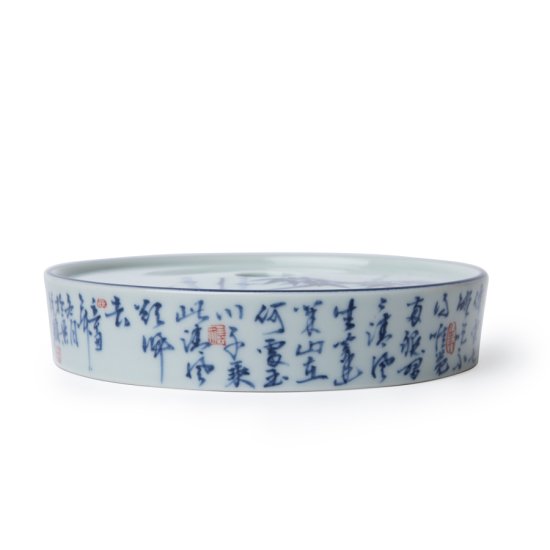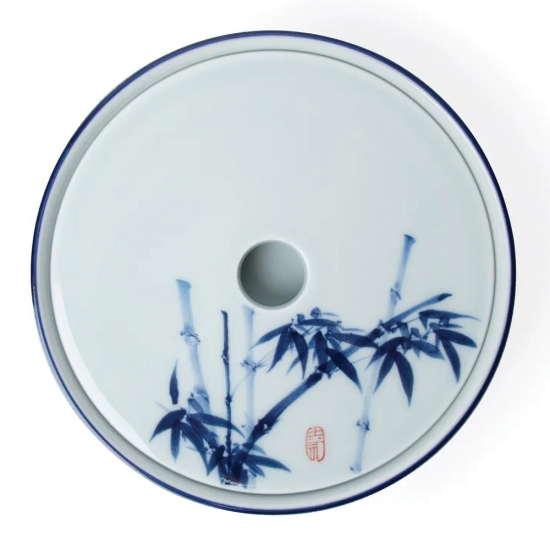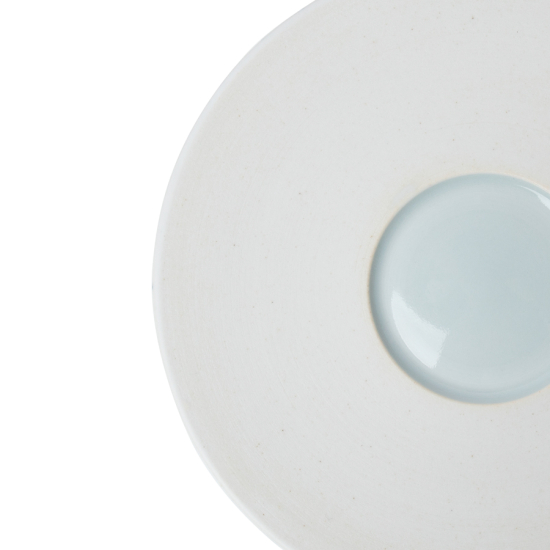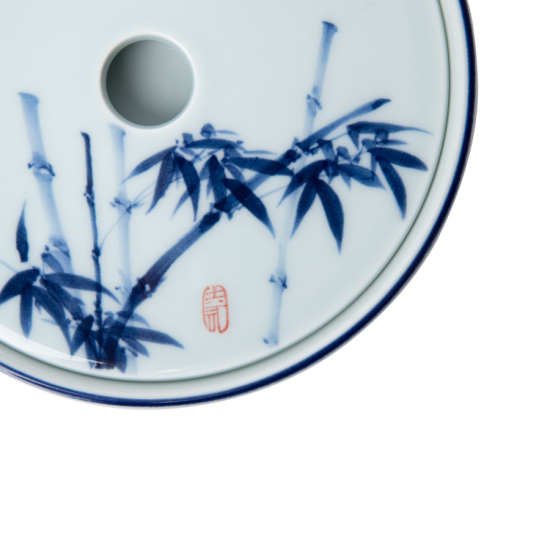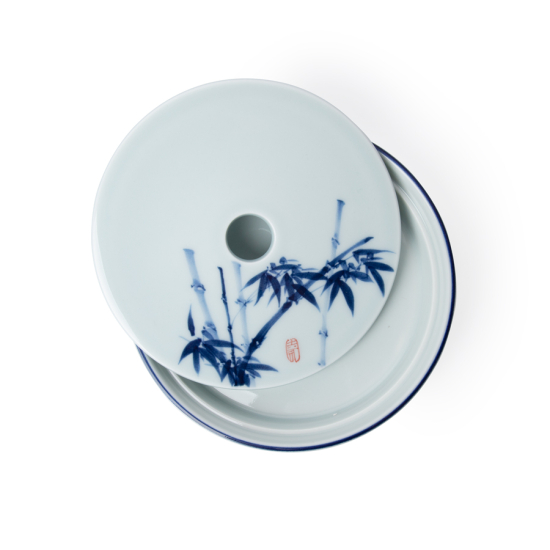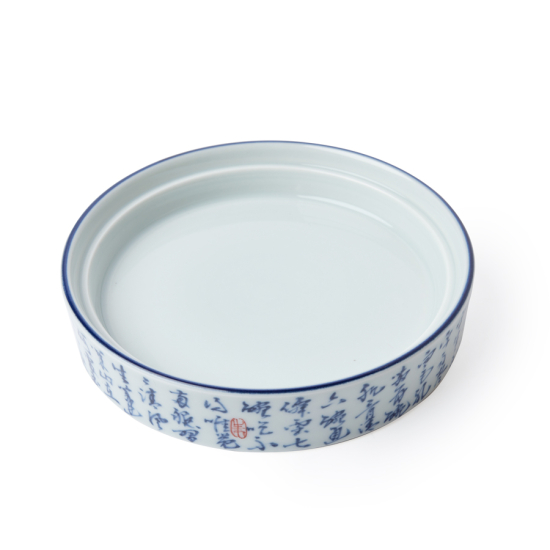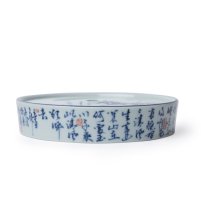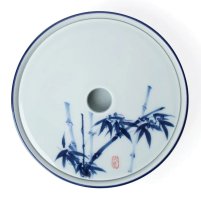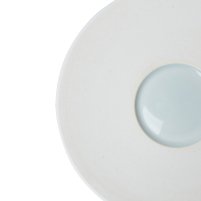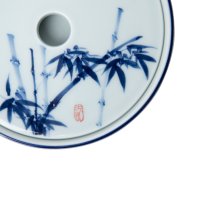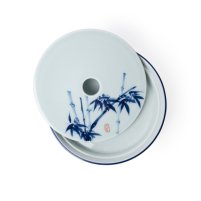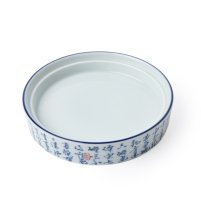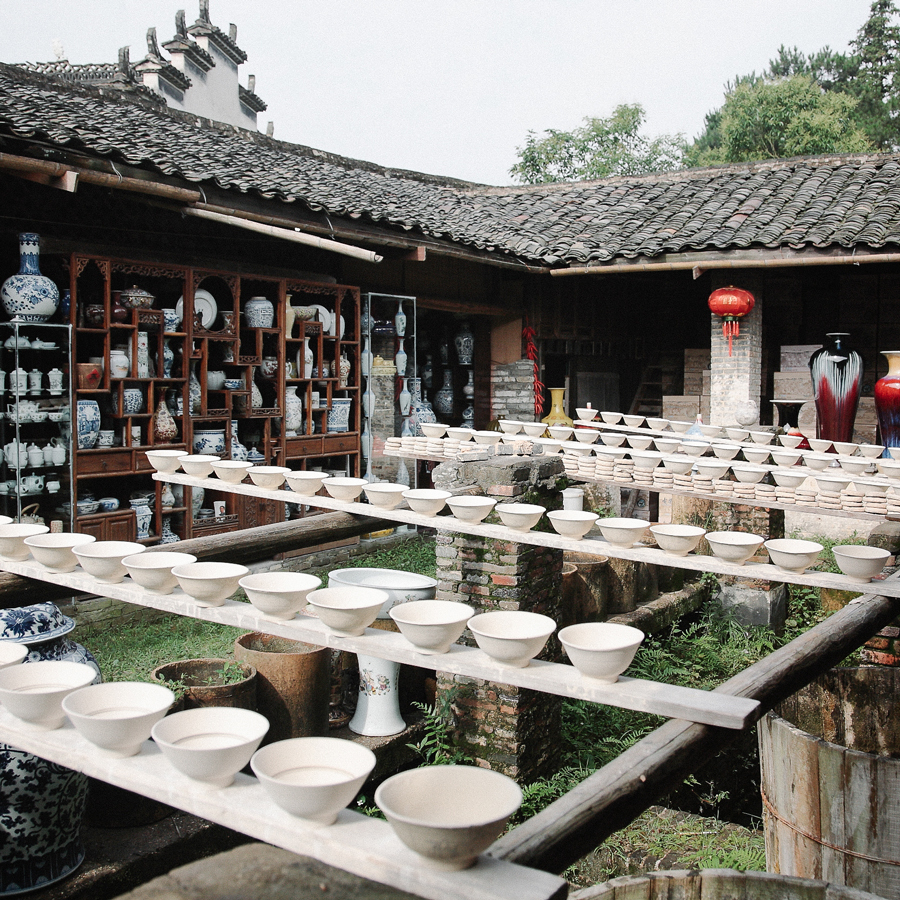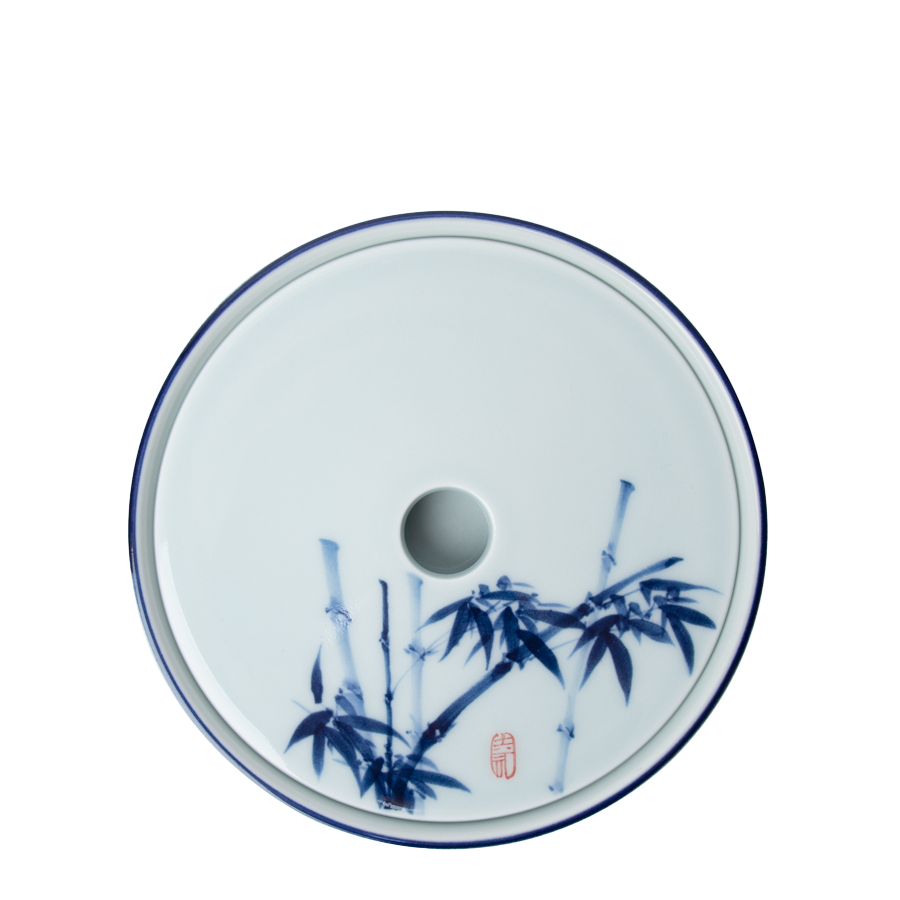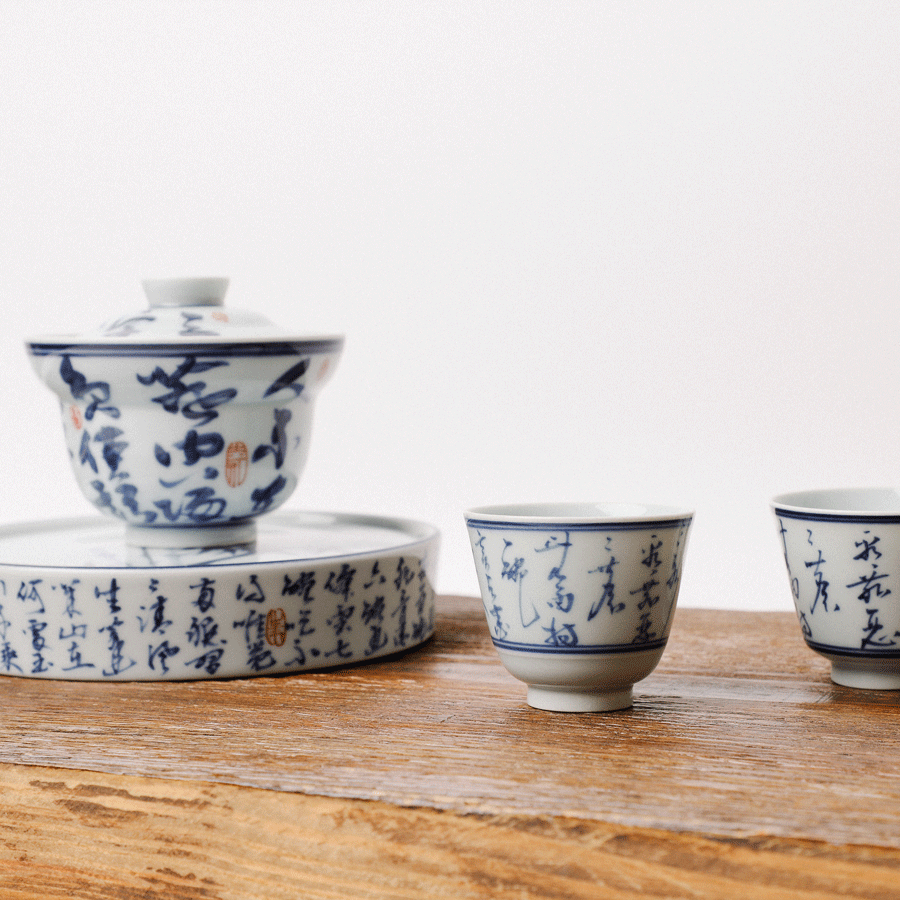Hand wash with warm water and liquid detergent as necessary.
Blue White
Hu Cheng Stand
SKU
6032
Yoshi En has recently grown out of Sunday Natural to become an independent premium tea store. As part of this transition, some products may still be shipped in Sunday Natural packaging.
A double-layered Hu Cheng stand for teapots or Gaiwan featuring a concealed drainage compartment. Handcrafted in the classic blue and white Qinghua style in Jingdezhen, the "porcelain capital" of China, this Hu Cheng is adorned with Chinese poetry artistically applied using a calligraphy brush. Perfect for Gan Pao dry pouring.
| Product | Hu Cheng double layer teapot stand |
| Origin | Jingdezhen, Jiangxi, China |
| Dimensions | Ø14cm x 2.8cm |
| Weight | 250g |
| Material | Porcelain |
| Decoration | 《七碗茶詩》 一碗喉吻潤,兩碗破孤悶。 三碗搜枯腸,唯有文字五千卷。 四碗發輕汗,平生不平事,盡向毛孔散。 五碗肌骨清,六碗通仙靈。 七碗吃不得也,唯覺兩腋習習清風生。 "The Seven Bowls of Tea" |
In stock



